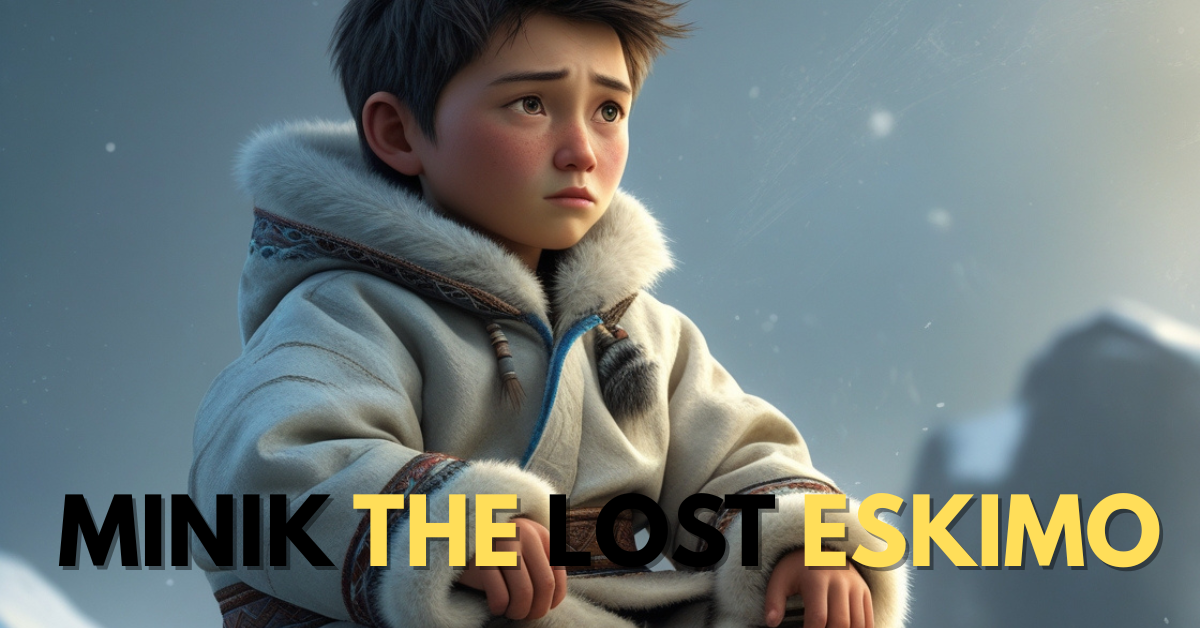An Eskimo Boy’s Fight for Justice in Old New York
In the fall of 1897, famed Arctic explorer Robert E. Peary returned to New York aboard the Hope, bringing with him six Inuit from Greenland—at the request of anthropologist Franz Boas—to be studied at the American Museum of Natural History. Among them was a cheerful young boy named Minik and his father, Qisuk.
The arrival caused a spectacle. Peary charged 25 cents for the public to view the Inuit in their Arctic clothing aboard the ship. Eventually, they were moved to the museum, where they lived in the basement, treated as both guests and exhibits. Minik, only six or seven, found some comfort among the familiar Arctic artifacts.
But within weeks, tragedy struck. The Inuit had no immunity to New York’s diseases. Four died from tuberculosis—including Minik’s father, Qisuk. Another returned to Greenland, leaving Minik alone.
Boas staged a funeral for Qisuk in the museum’s garden to console the boy. But it was all a cruel deception. Instead of being buried, Qisuk’s body had been dissected, his bones cleaned and stored in the museum’s collection. The “funeral” was a staged event using a log wrapped in furs.
Minik eventually uncovered the truth and spent the rest of his life trying to recover his father’s remains—requests the museum repeatedly ignored or denied.
This story is at the heart of Give Me My Father’s Body, a book by Arctic historian Kenn Harper. Originally self-published in 1986 and sold from Harper’s general store in Iqaluit, the book was later released in the U.S. by Steerforth Press. Harper, married to an Inuit and fluent in Inuktitut, paints a harrowing picture of injustice, colonial arrogance, and exploitation.
Harper’s research reveals damning details: Peary, who claimed to explore “for science,” actually profited by selling Arctic artifacts—often labeled as donations—with the backing of museum president Morris K. Jesup. He even smuggled furs and ivory duty-free. Peary had also exhumed the remains of a deceased Inuit family he had once known and sold their bones to the museum.
After Qisuk’s death, Minik was placed in the care of museum superintendent William Wallace. Despite Wallace’s modest means and later dismissal for embezzlement, he continued to support Minik, who learned English, attended high school, and tried to integrate into American society. But Minik never truly belonged. He was haunted by his father’s fate and struggled with identity and grief.
In 1907, Minik confirmed what he had long feared: his father’s skeleton was still in the museum. Just because I am a poor Esquimau boy, why can’t I bury my father the way he would want to be buried?”
Minik’s appeals—eventually reaching President Theodore Roosevelt—were silenced, thanks to Peary, who feared Minik might expose the explorer’s secret Inuit family.
Minik was allowed to return to Greenland in 1909. He remarried and reconnected with his roots, but remained drawn to the U.S. In 1916, he returned, eventually finding work as a lumberjack in New Hampshire. There, embraced by a local family, he seemed to find peace—until the Spanish flu claimed his life in 1918. He was buried in New Hampshire, far from his homeland but among friends.
Years later, Harper’s investigation reignited interest in Minik’s story. In 1992, journalists discovered the museum still held Qisuk’s remains. Under mounting pressure, the museum arranged their repatriation. In 1993, Qisuk and the others were finally laid to rest in a church cemetery in Qaanaaq, Greenland. In 1997, Queen Margrethe II of Denmark unveiled a plaque in their memory: They have come home.
The American Museum of Natural History has since acknowledged the episode, though not without deflection. Curator Ian Tattersall noted, “To judge what went on in that time by the values of today is not very productive.”
